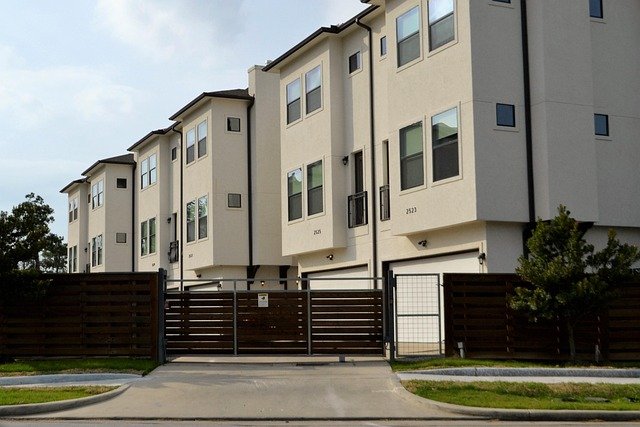What You Need to Know About Prefab Homes
Prefabricated homes represent a significant shift in the housing industry, offering an alternative to traditional on-site construction. These homes are built in sections in a factory-controlled environment before being transported to the building site for assembly. This method often allows for greater efficiency, reduced waste, and adherence to strict quality control standards, making them an increasingly appealing choice for individuals and families seeking new housing solutions across the United States. Understanding the process and benefits of prefab construction is key to appreciating its potential.

Understanding Modern Home Construction Through Prefabrication
Modern home construction techniques are continuously evolving, and prefabrication stands out as a method that merges efficiency with innovation. Unlike conventional building, where most of the work occurs on the final site, prefabricated homes involve constructing major components or entire modules in a factory setting. This controlled environment mitigates delays caused by adverse weather, ensures consistent material quality, and optimizes labor use. The precision manufacturing involved can lead to a tighter building envelope, contributing to better energy performance once the home is assembled.
The process typically begins with detailed architectural plans, which are then translated into specific modules or panels. These are fabricated using advanced machinery and skilled labor. Once completed, these components are carefully transported to the prepared foundation at the building site. The on-site work primarily involves assembling these sections, connecting utilities, and adding finishing touches. This streamlined approach often results in a faster overall construction timeline compared to traditional methods, allowing homeowners to move in sooner.
Exploring Stylish Prefab Home Designs
The perception of prefabricated homes has evolved considerably from earlier, often utilitarian designs. Today, stylish prefab homes offer a vast array of aesthetic possibilities, challenging traditional notions of factory-built housing. Architects and designers are increasingly embracing prefabrication as a method to create contemporary, visually appealing residences that rival or even surpass custom-built homes in design sophistication.
Buyers can choose from a wide range of architectural styles, including minimalist modern, rustic farmhouse, classic colonial, and innovative contemporary designs. Many manufacturers collaborate with renowned architects to develop signature lines, ensuring high-quality design and functionality. Customization options are also extensive, allowing homeowners to select finishes, fixtures, layouts, and even exterior cladding to reflect their personal taste and lifestyle. This flexibility means that a prefab home can be a unique expression of individual style, rather than a generic, mass-produced structure.
Navigating Prefab Home Options and Customization
When considering prefab home options, it is important to understand the distinctions between various types, each offering different levels of prefabrication and customization. Modular homes are built in sections (modules) in a factory and then transported to the site and assembled on a permanent foundation. These homes adhere to the same local building codes as site-built homes and are often indistinguishable from them once completed.
Manufactured homes, sometimes referred to as mobile homes, are built on a non-removable steel chassis and are constructed to a federal standard (HUD Code) rather than local building codes. They can be placed on rented or owned land. Panelized homes involve manufacturing wall, floor, and roof panels in a factory, which are then shipped to the site and assembled by a local builder. This method offers a middle ground between modular and stick-built construction, providing some factory efficiencies while retaining significant on-site flexibility. Understanding these types helps in choosing the best fit for specific needs and budgets.
General Cost Insights for Prefabricated Homes
The cost of prefabricated homes can vary significantly based on the type of construction, size, design complexity, chosen finishes, and location. While often perceived as more affordable than traditional stick-built homes, the final price depends on numerous factors including transportation costs, foundation work, utility hookups, and on-site assembly. It’s important to consider all these elements when budgeting for a prefab home, as the advertised base price typically covers only the factory-built structure.
For those exploring options, understanding typical price ranges can be helpful. Manufactured homes generally represent the most budget-friendly entry point, while modular homes, due to their adherence to local building codes and higher level of finish, often have a price point closer to traditional construction, sometimes offering savings through efficiency. Panelized homes typically fall in between, providing a balance of cost and customization. Engaging with specific manufacturers or local services for detailed quotes is essential for accurate planning.
| Product/Service | Provider | Cost Estimation |
|---|---|---|
| Manufactured Home | Industry Average | $50,000 - $150,000 |
| Panelized Home | Industry Average | $100,000 - $250,000 (shell kit) |
| Modular Home | Industry Average | $150,000 - $400,000+ |
Prices, rates, or cost estimates mentioned in this article are based on the latest available information but may change over time. Independent research is advised before making financial decisions.
In conclusion, prefabricated homes offer a compelling blend of efficiency, design flexibility, and quality control that appeals to a diverse range of homeowners. From the streamlined processes of modern home construction to the vast array of stylish prefab home designs and varied prefab home options, this building method provides practical solutions for contemporary living. Understanding the different types of prefab homes and their associated costs allows prospective buyers to make informed decisions about their housing future, contributing to the evolving landscape of residential construction.




